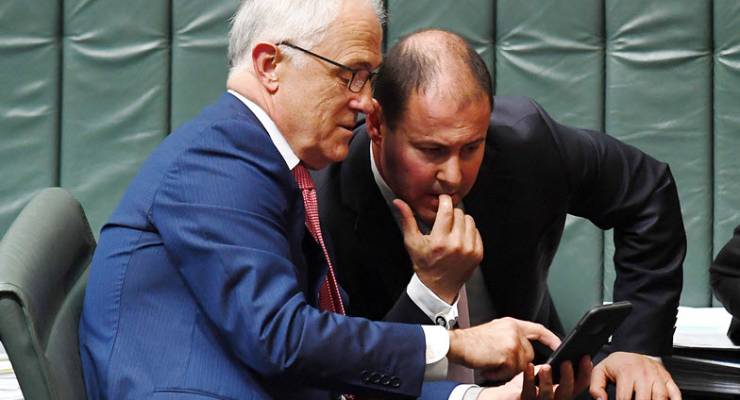
Prime Minister Malcolm Turnbull and Energy Minister Josh Frydenberg have been huffing and puffing for most of the past year about the nasty people at AGL for not keeping its rickety, climate change-inducing Liddell coal-fired power station in the New South Wales Hunter Valley open past 2022.
As with so much of their confected anger at business, Turnbull, Frydenberg, Barnaby Joyce and others in the government have completely missed the mark with Liddell and AGL. The government should be looking at the company’s financial statements — specifically its earnings guidance for the year to June 30 2018, which was set last year, confirmed in December and reconfirmed on Thursday. If you want to know where your money has gone with these big rises in electricity and gas, look no further than the profit account for AGL: it could very well hit a record of almost $1 billion by June 30, a record.
Then, of course, there are AGL’s shareholders. Their interim dividend was boosted 32% (yes, 32%) up 54 cents a share and is set to reach an all-time high of more than $1 a share, all things being equal.
AGL is our second largest energy retailer and a major power producer. It told the ASX yesterday that its profit had nearly doubled to $622 million from $325 million a year earlier, with the company benefiting from high wholesale electricity prices and gains from hedging activities. Underlying profit, which excludes significant items, leapt a solid 27% to $493 million for the six months to December 31, while revenue was up a more sedate 7% at $6.45 billion. The company also reconfirmed its December full-year guidance for underlying profit after tax of between $940 million and $1.04 billion. If it gets near a billion dollars, that will yield net profit each week of just under $20 million, or around 80 cents a week for every Australian. Yes, that’s net profits (not revenue).
And last week’s December quarter consumer price index (CPI) contains another point that has escaped the PM. In his weekly market report at the weekend, Dr Shane Oliver, the chief economist of the AMP, made this very telling point:
Much has been made of record low wages growth and falling real living standards. But its interesting to note that while wages growth has fallen to a record low, price rises for most Australian businesses only averaged 1.1% last year (according to the ABS’s Market sector goods and services ex volatile items price index). If price rises for government influenced areas like health, education, utilities and tobacco were similar there would be far less angst about low wages growth!
He pointed out that while headline CPI rose 1.9% in 2017, up from 1.5% in 2016, inflation in the government-influenced parts of the economy rose sharply with utilities prices up 9.2% (electricity 12.4%), health costs 4%, education 3.2% higher and alcohol and tobacco costs up by 7.3% (tobacco up 15.2% alone). The increases in tobacco and alcohol are being driven by regular increases in excise and taxes, but utility costs, health costs and education are all in the bailiwick of the federal and state governments. Even though the states will claim that electricity costs were set by independent tribunals, it is well within their power to disallow or moderate those rises. AGL’s near record profit, surging dividend and cash flows were greenlit by government, one way or another.
And we have a Prime Minister in Malcolm Turnbull who boasts about his private sector, commercial expertise, and he doesn’t have the sense, nor does anyone in his government (such as Scott Morrison, he worked with the Property Council, you know and that makes him an expert on everything) or the various ministerial offices, to examine what AGL is doing financially, not operationally, with Liddell.








As an aside to the above, what possible justification is there for the taxes on alcohol etc increasing by so much more than normal indexation?
A lot of us would be very happy with AGL paying a lot of that profit as carbon taxes, and for its talk to be about which non-carbon sources will replace coal or gas on the sites of old power stations.
Lucky that we don’t get the Dutch Disease – generations of full employment, high living standard and low inflation due to North Sea gas.
The wonders of privatisation!
I thought selling utilities to the private sector was supposed to make things run more efficiently and be cheaper.
Geez Glen, AGL have been so generous as they rewarded me, a long term sucker/customer, with a 10% discount on any online purchase with Amazon for Chrisake. What a bloody insult.
haha…. don’t ever expect a discount from them